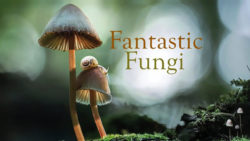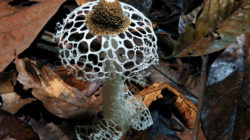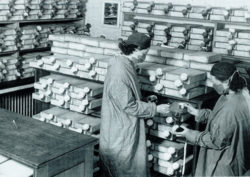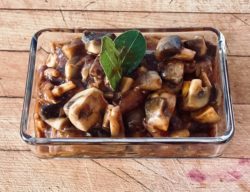Read Time: 5 Minutes Subscribe & Share
Successes And Failures
 Documentaries can be a yawnful. I remember a period in my life when I thought it was intellectually cool to watch Andy Warhol “documentaries” [I have to digress here, as his niece, one of his not-credited assistants and a secretary in the same “legal pool” I was in, educated me on what really happened in those films with Uncle Andy. Stories for another day….] Some documentaries are artfully constructed so that you flow along with the protagonist’s world view. Richard Attenborough comes to mind. And then there are screeds that basically preach to the choir, such as the two films on genetically modified organisms that were a KD feature a month ago.
Documentaries can be a yawnful. I remember a period in my life when I thought it was intellectually cool to watch Andy Warhol “documentaries” [I have to digress here, as his niece, one of his not-credited assistants and a secretary in the same “legal pool” I was in, educated me on what really happened in those films with Uncle Andy. Stories for another day….] Some documentaries are artfully constructed so that you flow along with the protagonist’s world view. Richard Attenborough comes to mind. And then there are screeds that basically preach to the choir, such as the two films on genetically modified organisms that were a KD feature a month ago.
This film on the research and mysteries of the mushroom kingdom, both above ground and below, is not a yawnful, but there are moments when you feel you have stumbled into a TED talk, complete with a rapturous audience applauding the speaker. I wondered about this myself and with a bit of reading found out that segments of the film’s main player, as well as his TED talks, certainly abound. Brie Larson supplies a breathy voiceover as the mycelium persona. Despite such distractions, the photography and its orchestral coordination generally sweeps you along. So there is much to enjoy in this documentary that cannot quite separate itself from the sales pitch lobbed by the owner of this website.
Documentary As Fantasia
This is not a film on how to discern edible mushrooms for that Italian or French recipe you have always wanted to try, but it tries to do just about everything else. It  incorporates history and scientific exploration as well as speculation into the world beneath our feet, along with the political issues that surround this almost mystical form of life that is neither animal or vegetable. In truth, you are watching a mycologist and salesman walk you through his views of the mysteries of the mycelium. Harold Stamets is the main guide in Fantastic Fungi and videos of his lectures appear too frequently. But beyond his sales pitch and mycelium observations lie some fascinating and easily digested facts and theories about the possibilities the incredibly large mushroom family has to offer.
incorporates history and scientific exploration as well as speculation into the world beneath our feet, along with the political issues that surround this almost mystical form of life that is neither animal or vegetable. In truth, you are watching a mycologist and salesman walk you through his views of the mysteries of the mycelium. Harold Stamets is the main guide in Fantastic Fungi and videos of his lectures appear too frequently. But beyond his sales pitch and mycelium observations lie some fascinating and easily digested facts and theories about the possibilities the incredibly large mushroom family has to offer.
Penicillin to Psilocybin
 This film documents some of the more scientific forays into the elusive world of fungi. And it shows how much this underground universe has to share with humanity, literally and figuratively. Consider the groundbreaking discovery of a mold in a petri dish in 1928 by Dr. Alexander Fleming in St Mary’s Hospital in London. This particular member of the mycelium family was busily producing a toxin to kill off encroaching bacteria in the dish. Dr. Fleming and his fellow scientists tried to isolate this strain of mold with no success, and so they dropped their research (there also existed little interest among his scientific peers when he first published his research papers). It was not until 1937 that a team of scientists headed by Dr. Howard Florey at Oxford University
This film documents some of the more scientific forays into the elusive world of fungi. And it shows how much this underground universe has to share with humanity, literally and figuratively. Consider the groundbreaking discovery of a mold in a petri dish in 1928 by Dr. Alexander Fleming in St Mary’s Hospital in London. This particular member of the mycelium family was busily producing a toxin to kill off encroaching bacteria in the dish. Dr. Fleming and his fellow scientists tried to isolate this strain of mold with no success, and so they dropped their research (there also existed little interest among his scientific peers when he first published his research papers). It was not until 1937 that a team of scientists headed by Dr. Howard Florey at Oxford University reopened the investigation, which became known as “The Penicillin Project”. Huge amounts of “broth” stored in a variety of containers, including bathtubs, were required to develop a meager spoonful of pure penicillin, until special fermentation vats were developed that were famously monitored daily by “The Penicillin Girls,” pictured here.
reopened the investigation, which became known as “The Penicillin Project”. Huge amounts of “broth” stored in a variety of containers, including bathtubs, were required to develop a meager spoonful of pure penicillin, until special fermentation vats were developed that were famously monitored daily by “The Penicillin Girls,” pictured here.
Even that was a laborious process to produce only slightly larger amounts of the antibiotic. It took the entrance of England into World War II, with its desperate need for easily sourced large stocks of the penicillin spore, that Dr. Florey went to the US for help. A lab in Peoria, Illinois, found the miracle in a molding cantaloupe, which produced the penicillin spore at seven times the rate of the experiments in the UK. Pfizer was one of the first producers of massive amounts of penicillin from the cantaloupe discovery.
I was a beneficiary as a child of this “newfangled drug” as my pediatrician called it. I had suffered from a severe bacterial infection and was bedridden for weeks with a high fever, but with a steady administration of penicillin, the infection receded. I spent many hours comfortably in bed recuperating, and enjoyed listening repeatedly to such new hits as “How Much Is That Doggie In The Window on my father’s radio
Psilocybins have a different scientific research trail and trial, as revealed in Fantastic Fungi. Reading through the very trusty Wikipedia articles, these hallucogenic mushrooms have been ingested by humans for thousands of years with predictably happy results. There has been research on their effects for centuries. Interestingly, research in the US was inhibited by criminalizing their use along with other drugs in the 1960s, and one can easily divine the political reasons why. This ban has been rescinded and research is now once again trying to evaluate its pharmacological use, which this film describes.
A ‘Shroom Snack – Greek Style Mushrooms
While I am too nervous to learn about foraging some of the above-the-earth examples of the mycelium kingdom, I do love cooking with them. This fall, farm markets that are in my area of the DMV are filled with mushrooms, and I hope they are in your area too. Champignons A La Grecque (greek style mushrooms) is one of my favorite ways to present some of the more commonly available varieties. It’s a classic little dish often found on platters of hors d’oeuvres variés in French bistros. This particular recipe is from the editors of Marmiton.org, a terrific French food website, similar to our Epicurious. I used to make this and a few other dishes like carrot salad, assorted olives, pickled onions, a cheese spread, and sort of a Frenchified version of Italian caponata. You just serve a tray of them in little dishes, and everyone just helps themselves. That, with some decent bread, was a great introduction to just about any meal. I need to reintroduce this very retro French classic again in my dotage. A theory is that A La Grecque was a style for treating vegetables that came from Greek refugees fleeing the Ottoman Empire and settled in France.


- 500 gr (a bit over a pound) fresh mushrooms (white button ones are usually suggested, but a mixture is a lovely alternative.)
- 20 cl (3/4cup) dry white wine
- 5cl (3-4 tbs) olive oil
- juice of 1/2 small lemon
- tomato paste to taste ( I used the Sicilian Estratto)
- Sea salt and freshly ground pepper
- several sprigs of fresh thyme
- 2 pinches of granulated sugar
- 1 bay leaf
- Rinse and thoroughly dry mushrooms
- Depending on size, leave small ones whole, larger ones will need to be halved or quartered.
- In a saute pan, heat the olive oil and add the mushrooms, and saute them gently until soft and aromatic.
- Add the wine, lemon juice, tomato paste, thyme (destemmed) salt and pepper and the bay leaf.
- Cook this mixture for about 10 minutes over medium heat until you like the taste and consistency.
- Pour into a container and store in the fridge until ready to use.
- I prefer using tomato paste to a canned tomato sauce, as you use less, just enough to give a slight tomato background to the mushrooms.

Kitchen Detail shares under the radar recipes, explores the art of cooking, the stories behind food, and the tools that bring it all together, while uncovering the social, political, and environmental truths that shape our culinary world.





Nce post, Nancy. My fav recipe of 2020 was Amanda Hesser’s Rigatoni with White Bolognese, which I had been eyeing for years. It’s super especially with some excellent rigatoni. I’m thinking Pasta Setaro. The mushrooms are reconstituted porcini, but result in a bowlful of bliss. The recipe is in Cooking for Mr. Latte, in NYTimes Cooking, and on FOOD52.